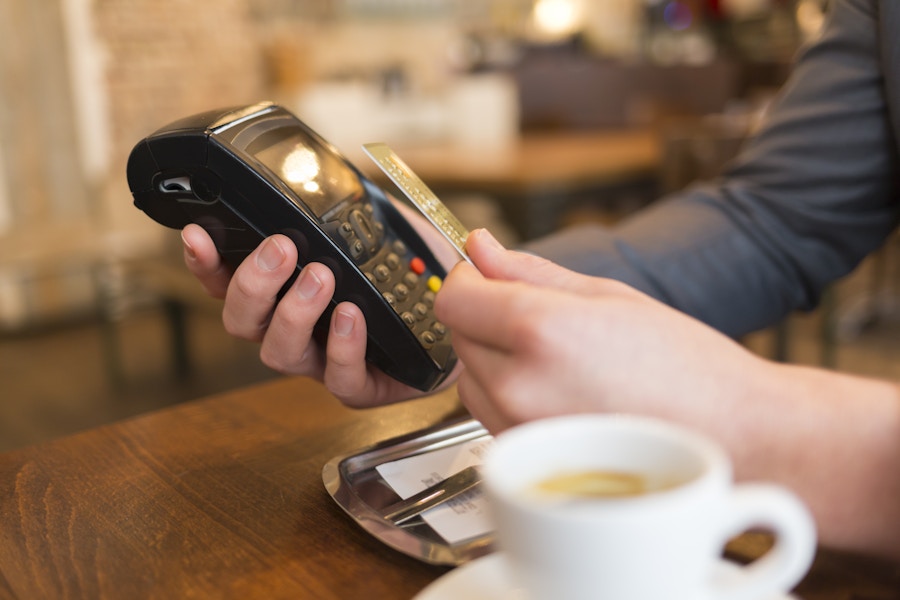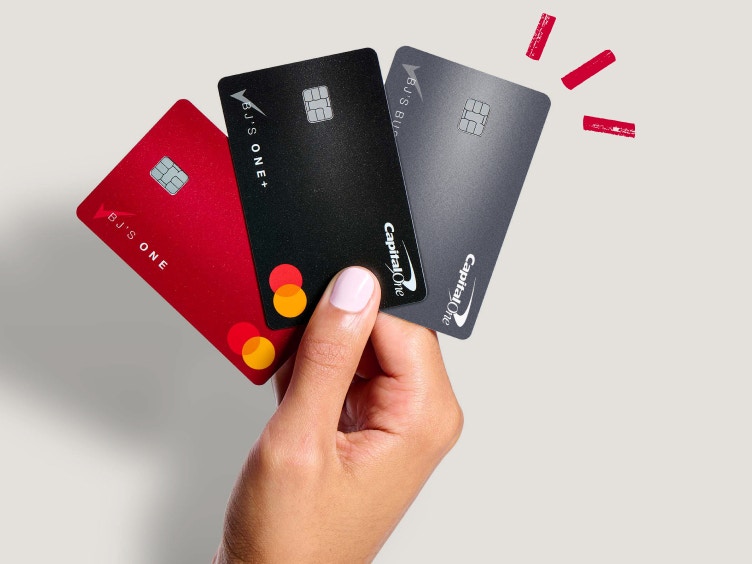BJ’s Wholesale Club credit card just got a facelift. The store card program used to be run through Synchrony Bank, but as of late February 2023, Capital One is taking over.
The BJ’s credit card is different from a lot of store credit cards in that you have to have good to excellent credit to qualify — so you’ll want to check your credit score before you apply. There’s no point in dinging your credit with a hard inquiry if you’re not going to actually qualify for the card.
BJ’s credit cards are different in other ways, too. You can use them to spend money anywhere — not just at BJ’s Wholesale Club. While you’ll get higher rewards when shopping at BJ’s, you’ll still be able to benefit from the card if you’re using it to shop elsewhere.
Download The Krazy Coupon Lady app to get the DL on an array of store credit cards.
BJ’s One and BJ’s One+ Mastercard Overview
BJ’s credit cards actually come in two flavors: The BJ’s One Mastercard and the BJ’s One+ Mastercard. You can only get the BJ’s One+ Mastercard with its beefed-up rewards if you have a BJ’s Club+ membership (the new name for BJ’s Perks membership). If you only have a regular Club membership, you’ll only be able to open the regular BJ’s One Mastercard.
Let’s look at where these cards are the same — and where they’re different:
Both cards have identical APRs and fees.

Both the BJ’s One and BJ’s One+ Mastercard offer APRs on purchases and balance transfers of 19.24%, 25.24%, or 29.24% depending on your creditworthiness. Should you use your card to make a cash advance, the APR jumps up to 31.24%
These APRs are a smidge high even for a credit card, but you can avoid paying interest by paying off your balance in full every statement cycle — and by not taking out cash advances.
With either card, you won’t have to pay balance transfer fees unless you’re taking advantage of some future promotional APR. If you’re paying the full APR on the balance transfer, though, there are no additional fees.
There are fees if you take out a cash advance to the tune of 3% or $3 — whichever is greater. There’s also a late fee of up to $40.
TIP: While it’s great that there are no balance transfer fees, it’s probably not a great idea to transfer a balance at the APRs currently offered by BJ’s credit cards. You’ll want to shop around to find a better deal.
Notably, there’s no foreign transaction fee.

The fact that there’s no foreign transaction fee on this card is huge. While many traditional credit cards offer this perk, it’s rare to find a store card you can use outside of the store period — nonetheless a store card you can use in another country without any fees.
TIP: Big traveler? You might want to check out Chase Sapphire Preferred instead.
Credit requirements are also identical for both BJ’s credit cards.
To qualify for either card, you’re going to need good to excellent credit. Mastercard doesn’t print specific credit score requirements for these cards, but generally speaking, “good” credit starts somewhere between 670 and 700 depending on who is crunching the numbers.
Mastercard is a little more forthcoming about specific line items they don’t want to see on your credit report, though. In order to qualify, you will generally need:
No bankruptcies within the past 5 years.
No loan defaults within the past 5 years.
A current loan or credit card with no late payments (30 days late or more) over the past year.
To qualify for the best rates, you’re likely to need:
No bankruptcies ever.
No loan defaults ever.
No late payments (60 days or more) on any debt — including medical debt — over the past year.
At least one loan or credit card account that’s been open for at least three years. The minimum credit limit or original amount borrowed must be $5,000 or more.
Related: Best Credit Cards for Bad Credit
The benefits are where things are different with BJ’s credit cards.

So far both cards have been pretty much identical. So what’s the benefit in getting the BJ’s One+ Mastercard over the regular BJ’s One credit card?
It’s all in the benefits.
BJ’s One Mastercard Rewards
With the BJ’s One Mastercard, you get 3% back in rewards for all purchases made at BJ’s. You’ll get 1.5% back in rewards on purchases made everywhere else.
You’ll also get $0.10 off per gallon every time you use your card to pay at BJ’s gas stations.
TIP: With either card, you can start redeeming your points in $10 minimum increments in store at BJ’s, online, or in the app.
BJ’s One+ Mastercard Rewards
The rewards on the BJ’s One+ Mastercard are similar to the BJ’s One Mastercard, just juiced up.
Instead of 3% back in rewards on BJ’s purchases, you’ll get 5% back. Purchases everywhere else will earn you 2% in rewards instead of just 1.5%
You’ll also save more at the gas station — $0.15 off per gallon compared to the other card’s $0.10 off.
Related: Everything You Need to Know about BJ’s Coupon Policy
Who are BJ’s credit cards best for?
The BJ’s credit card is best for those with good to excellent credit, especially if they have a Club+ membership that qualifies them for the higher rewards that come with BJ’s One+ Mastercard. Those who travel abroad may be pleasantly shocked and surprised to learn that there is no foreign transaction fee with this card. If you only qualify for a BJ’s One Mastercard, you can either pay to get a Club+ membership to qualify for higher rewards or consider cards offered by other retailers that don’t have membership requirements, like the Target RedCard. This alternative doesn’t reward you for shopping outside of Target, though you can use the credit card version outside of Target to make non-cash-back purchases. It does give you 5% cash back on each and every Target purchase, though. The RedCard also tends to have lower credit requirements.
































Tell us what you think